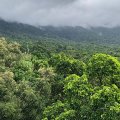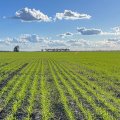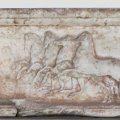Ancient larvae found in lakes could provide the answer to how climate change has affected Australia’s weather over the past 21,000 years.
Dr Craig Woodward from UQ’s School of Geography, Planning and Environmental Management (GPEM) is working on a project that aims to demonstrate how climate systems in south-east Australia responded to large scale global change during Australia’s last ice age.
The research team is led by colleague Professor James Shulmeister, with the larvae that Dr Woodward works with possibly holding the key to some important answers.
“The heads of the larvae (called head capsules) are made of a substance called chitin that is resistant to decay. In the right conditions, the larval head capsules can be preserved for hundreds of thousands of years as fossils in the layers of mud at the bottom of lakes,” Dr Woodward said.
“You could think of the head capsule as a time capsule. The chemical composition ‘records’ a snapshot of environmental conditions in the lake in the season the larvae were living.”
Dr Woodward said the remains incorporated stable isotopes of oxygen and hydrogen which helped paint a picture of different weather patterns over time, including rainfall.
“This is important because we currently don’t have a good grasp of how rainfall varies in Australia over long periods,” he said.
To collect the specimens is a painstaking process that involves selecting individual heads from a sample with tweezers and the aid of a microscope, for further analysis by a mass spectrometer. Dr Woodward is currently working on a new technique to measure the isotopic composition of a single specimen.
The results of this research may have significant impacts on climate models currently used for predicting global warming.
“Much of our understanding of past climates is based on very old and incomplete data. As these are used to verify future climate predictions all our current climate models may be way off base,” Professor Shulmeister said.
“Almost 80% of Australia’s population and agricultural and industrial production falls in the region being investigated, making significant economic and environmental impacts likely as a result of altered climate systems.”
Media: Kate Swanson (07 3346 7406, k.swanson@uq.edu.au)
.jpg)









